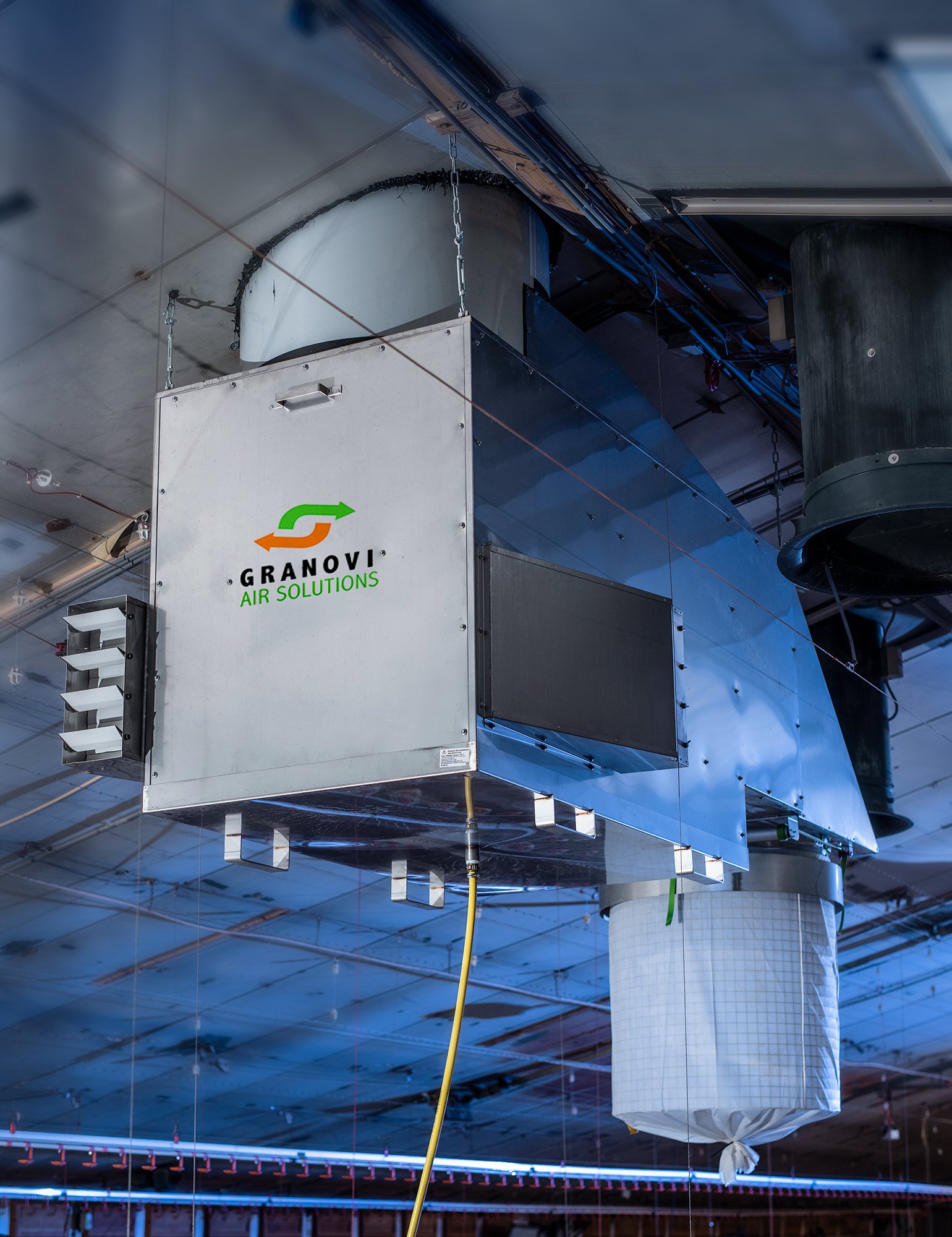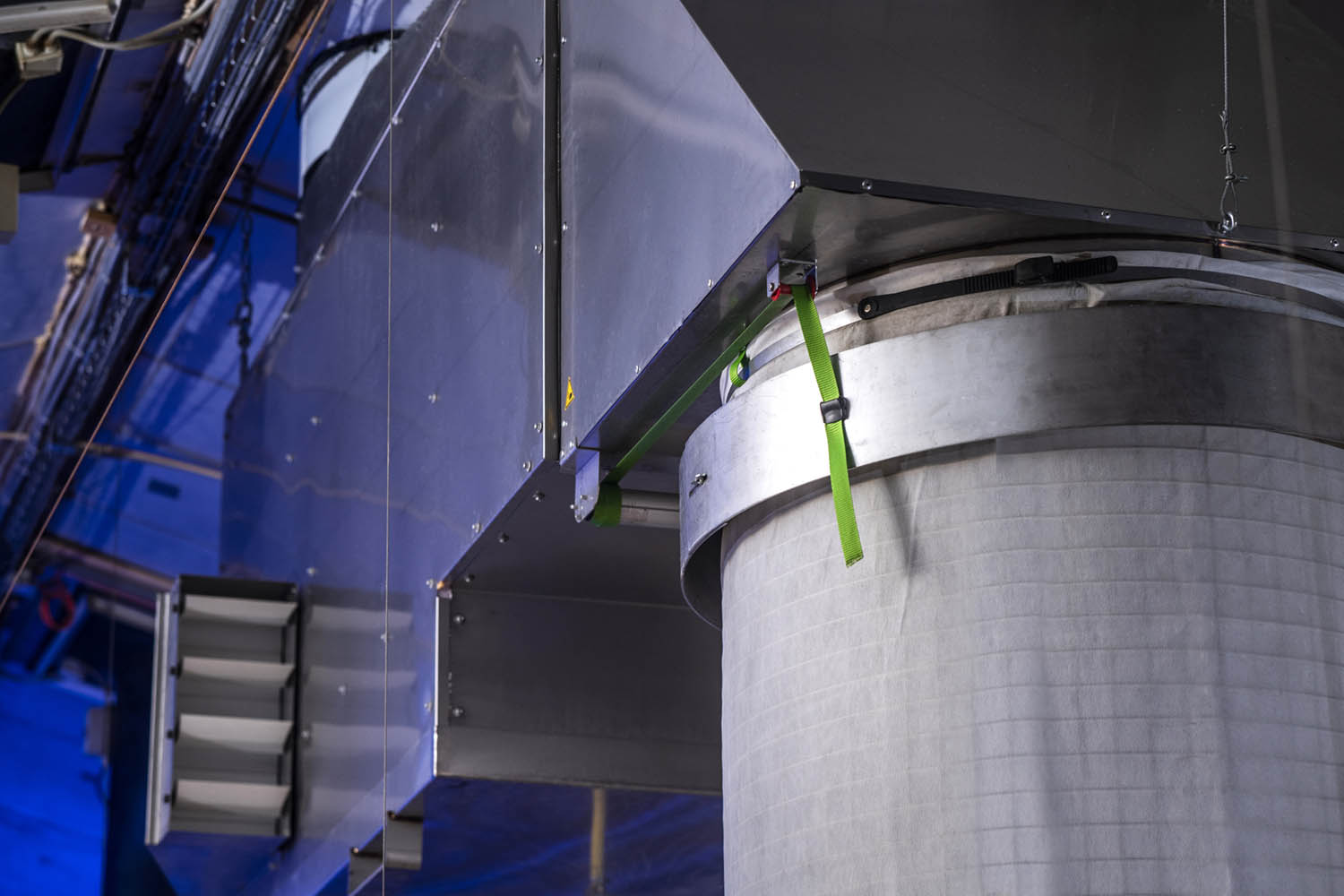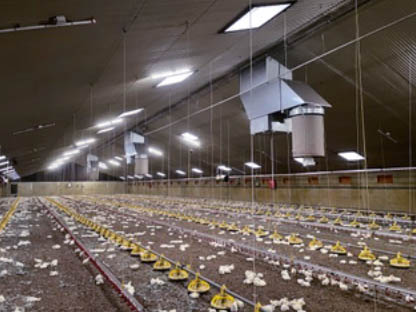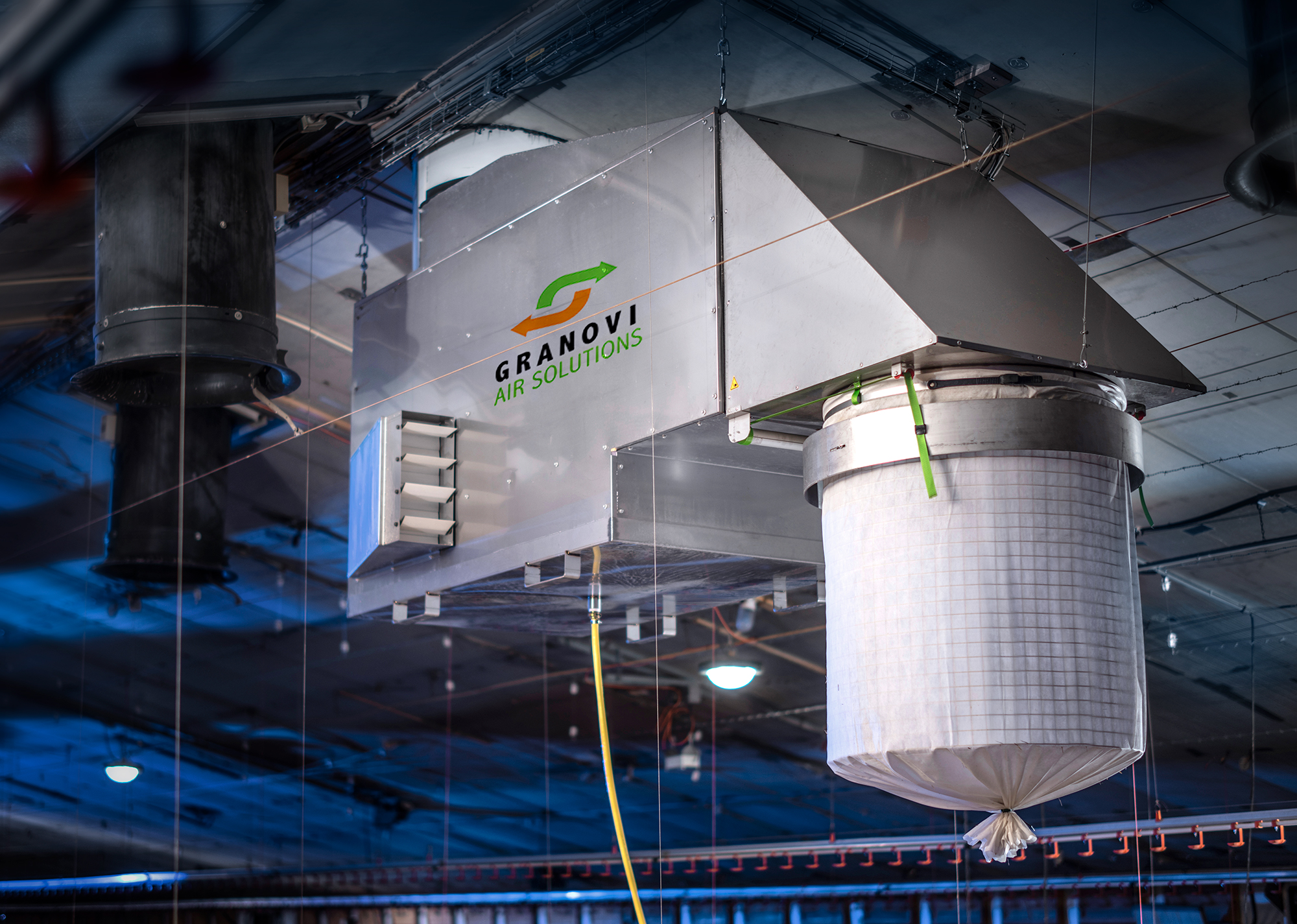Heat exchangers (for poultry houses) in combination with a fine dust filter unit having multiple advantages :
The warm house air and cold fresh air simultaneously pass through the exchanger element without mixing. This way, the fresh outside air is heated by the exhausted warm house air. The result is conditioned fresh outside air supplied with a temperature approximately equal to the inside house air temperature and low humidity leading to maximum dry capacity.
Granovi Air Solutions uses a cross-flow exchanger that can be assembled much more compact than traditional heat exchangers. The slats are made of aluminum which conducts 1000 times better than plastic. Because these slats are not supposed to get dirty, we place an F7 filter in front of them, which has a service life of at least one year. After one year, the filter must be replaced or cleaned. We place a rough filter in front of the F7 filter, which should be replaced at the end of each breeding cycle for broilers.

The heat exchanger results in energy cost savings and reduced CO2 emissions.
Energy cost savings are realized because the fresh outside air is heated by the exhausted warm house air. As a result, heat recovery efficiency is achieved. The fresh air in the house has a temperature that is almost equal to the temperature in the house. It is important to note that the extracted warm air is not reused.
When heat exchanger type G6000A is installed, (withdraws incoming air from in between the roofing sheets and the insulation), extra efficiency can even be achieved because the sun heats up the corrugated iron sheets resulting in incoming air being often even warmer than the house temperature.
In some situations, the house can even be warmed up before the broilers arrive.


Background information fine dust issue
particulate mattersuspended particles in the air that are 5 times smaller than scalp hair, can have harmful effects on public health. The RIVM published a report in August 2016 which showed that people who are frequently in contact with fine dust are more often diagnosed with pneumonia. For this reason, the EU has imposed certain guidelines related to the maximum concentration of fine dust (particulate matter) that is allowed in the air.
Unfortunately, these guidelines are still not achieved everywhere. A study by Wageningen University showed that the concentration of fine dust in the air near poultry houses in the Netherlands is often still too high. There are filter systems on the market to remove the fine dust from the air, but these are often expensive and also consume a lot of energy.
Granovi Air Solutions offers a solution for this problem by combining a fine dust filter system with a heat exchanger. The heat exchanger uses the warm outgoing air to preheat the incoming fresh cold air in the exchanger, which saves energy costs and reduces CO2 emission.
Measurements have shown (fine) dust separation rates of up to 99% (particulate matter pm10) Granovi Air Solutions retains 99% of PM10 particulate matter in the area of the exchanger (See report Pag. 24 prepared by Wageningen University). The fine dust can be reduced further by installing additional modular filter units. Depending on how many extra filters are installed, up to 99% of the fine dust can be filtered.
Fine dust reduction PM10 |
50% - 1.45 m3/animal/hour |
37% - 1.00 m3/animal/hour |
31% - 0.75 m3/animal/hour |
13% - 0.30 m3/animal/hour |
Example: In order to comply with the EU regulation for fine dust reduction, usually a reduction of 50% must be achieved, which comes down to a capacity of 1,45m3 per broiler. The exhaust fan must be operational during the entire production period. However, all m3 outgoing air that goes through the filter is even 99% free of PM10 particulate matter.


Reduction of ammonia emissions is based on the drying and heating of the manure/litter layer by means of the maintenance-friendly heat exchanger in combination with continuously running circulation fans.
The heat exchanger uses the warm outgoing air to preheat the incoming fresh cold air in the exchanger. The heated air is blown towards the facade at the front of the exchanger, just like the recirculation fans required by the RAV (20m³ per m² within the house). The air is led back over the litter layer via the upper facade wall(s).
By mixing the air in the house, an even temperature is achieved throughout the house. The manure/litter layer is dried and the carbon dioxide (CO2), other gasses (including ammonia) and water vapor are removed from the animals.
If only ammonia has to be reduced, a capacity of 0.35 m3 per broiler is sufficient.
The exchanger is listed on the RAV list for ammonia reduction: BWL 2010.13.V76 (this report contains additional information).
The exchanger is listed on the RAV list for ammonia reduction: BWL 2010.13.V76
The exchanger is on the RAV list for ammonia reduction: BWL2010.13.V7 |
The exchanger is on the RAV list for fine dust reduction: BWL2021.01 (Variant C) |